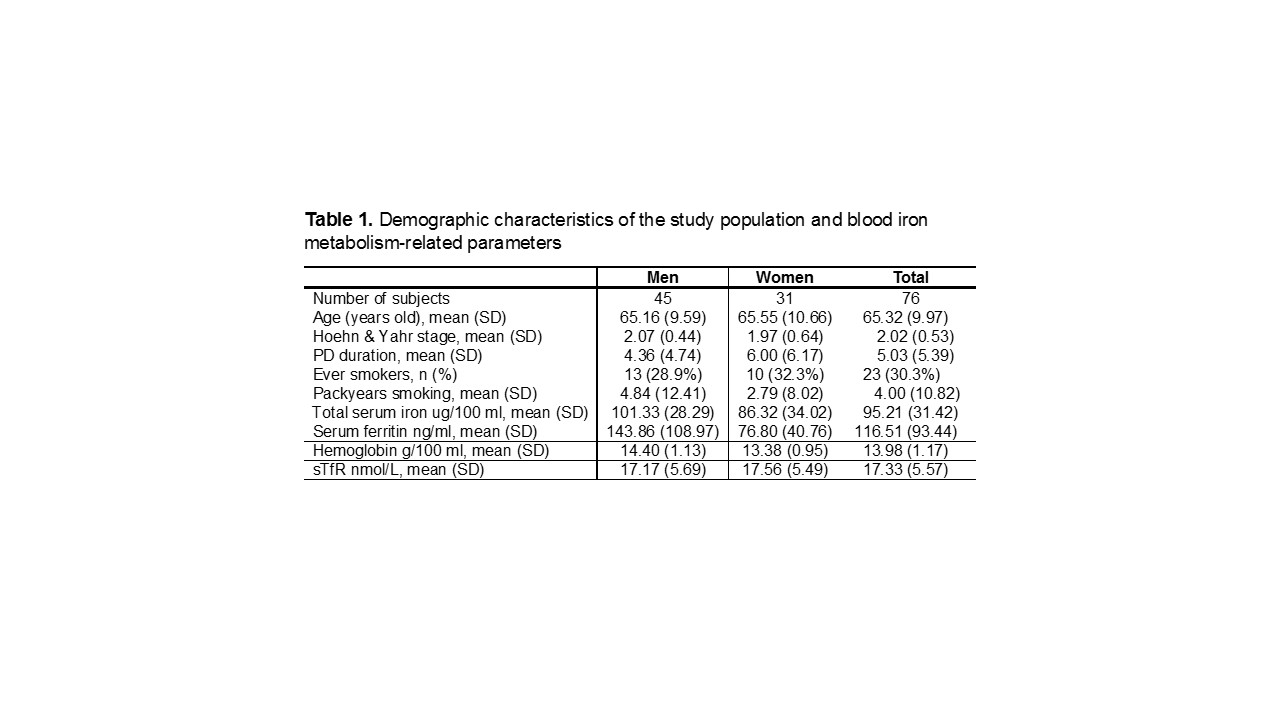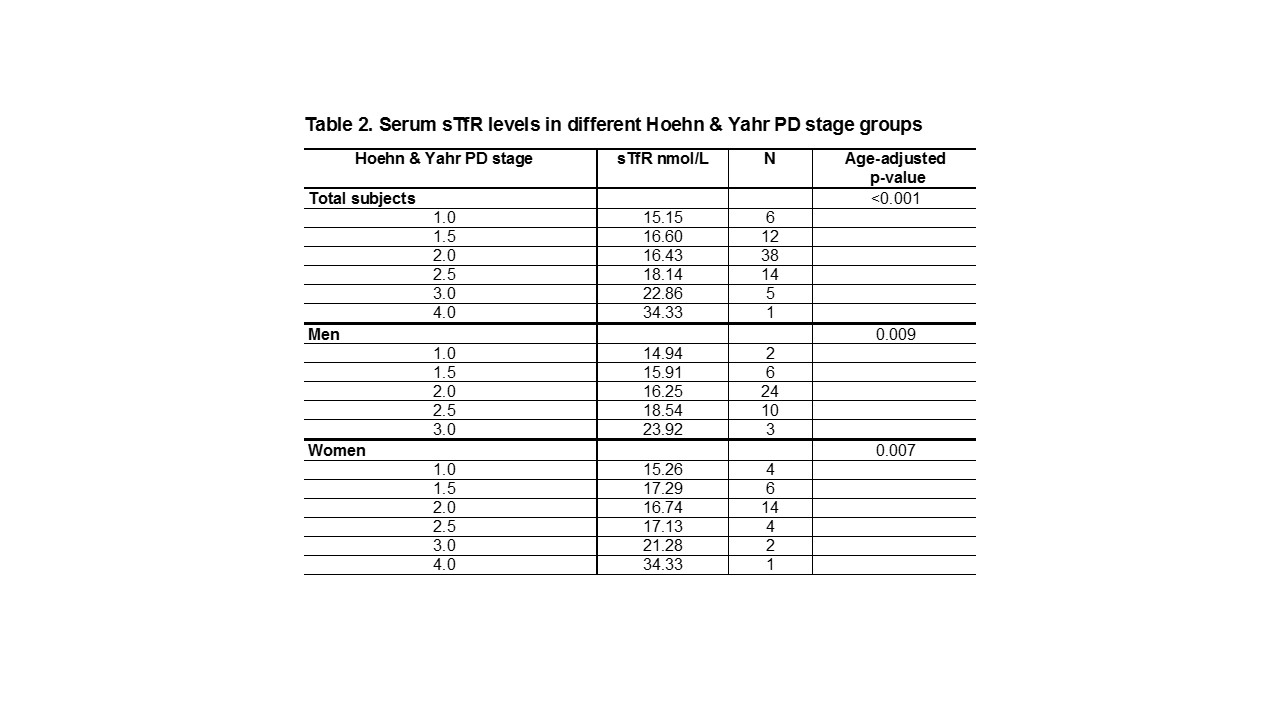Session Information
Date: Tuesday, June 6, 2017
Session Title: Parkinson's Disease: Pathophysiology
Session Time: 1:45pm-3:15pm
Location: Exhibit Hall C
Objective: To test whether levels of soluble transferrin receptor (sTfR) in the serum of Parkinson disease (PD) patients are correlated with the progression of the disease as assessed by the Hoehn & Yahr stage of PD.
Background: Biomarkers of PD progression could be helpful in monitoring the disease course with quantitative and reliable measurements during clinical trials. The sTfR is an interesting potential candidate as biomarker of PD progression because sTfR levels have been shown to directly correlate with cellular sTfR levels (1). TfR levels are directly involved in iron metabolism regulation, since their function in cellular uptake of iron from the bloodstream. PD patients have been shown to have lower levels of iron in circulation as compared to age- gender- matched control subjects (2), in spite of typically having higher levels of substantia nigra brain iron than controls. An increase in sTfR levels could hypothetically lead to an abnormality of iron partitioning from the blood to the brain that results in brain iron accumulation in PD.
Methods: PD patients were recruited in the study from the Puget Sound area of Washington State by advertisement through the Fox Trial Finder and from referral from collaborating neurologists. PD patients were included in the study only if they met the United Kingdom Brain Bank criteria of PD diagnosis as determined from neurology medical charts review from one of the collaborating neurologists. Hoehn & Yahr stage of PD was established by one of the collaborating neurologists. A total of seventy-six PD patients were included in the study, 31 women and 45 men. Patients were seen for one study visit for blood draw and collection of demographic information. Serum samples were tested for sTfR levels by ELISA with kits from R&D systems (DTFR1), according to the manufacturer’s protocol. Other iron metabolism-related blood tests such as total serum iron, ferritin and hemoglobin were performed by the LabCorp clinical laboratory.
Results: Levels of serum sTfR resulted directly increasing with the increase of the Hoehn & Yahr stage of PD progression in the overall study population (age-adjusted p-value < 0.001), and for both men (age-adjusted p-value = 0.009) and women (age-adjusted p-value = 0.007) separately.
Conclusions: Given that sTfR levels directly correlate with the Hoehn & Yahr stages of PD, they could be useful as a quantitative biomarker of PD progression.
References: 1) Beguin Y, Huebers HA, Josephson B, Finch CA. Transferrin receptors in rat plasma. Proc. Natl. Acad. Sci. USA 1988; 85:637-640.
2) Logroscino G, Chen HC, Wing A, Ascherio A. Blood donations, iron stores, and risk of Parkinson’s disease. Mov. Disord. 2006; 21:835-838.
To cite this abstract in AMA style:
P. Costa-Mallen, S.-C. Hu, P. Agarwal. Serum soluble transferrin receptor levels correlate with the Hoehn & Yahr stage of Parkinson disease progression [abstract]. Mov Disord. 2017; 32 (suppl 2). https://www.mdsabstracts.org/abstract/serum-soluble-transferrin-receptor-levels-correlate-with-the-hoehn-yahr-stage-of-parkinson-disease-progression/. Accessed January 7, 2026.« Back to 2017 International Congress
MDS Abstracts - https://www.mdsabstracts.org/abstract/serum-soluble-transferrin-receptor-levels-correlate-with-the-hoehn-yahr-stage-of-parkinson-disease-progression/


